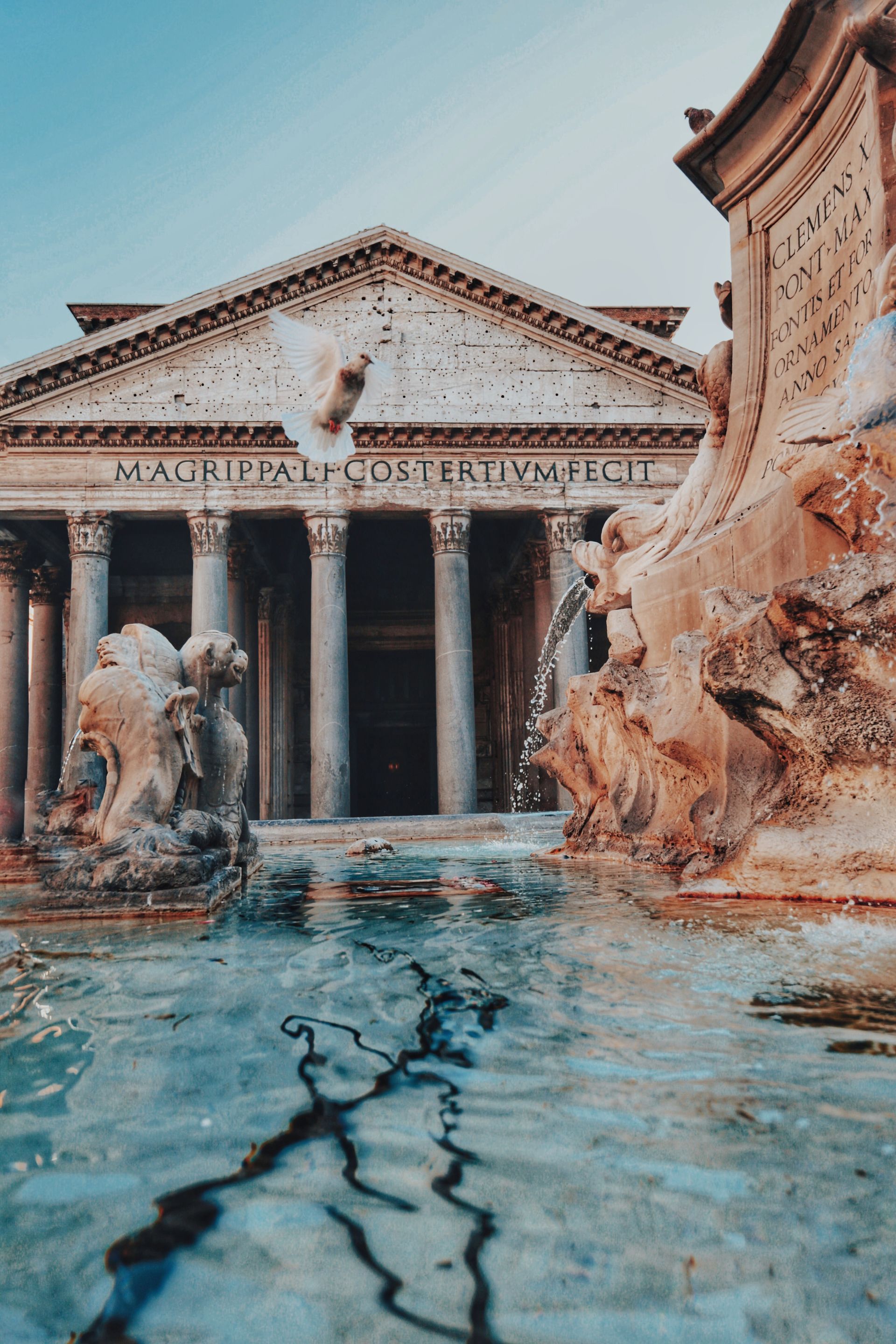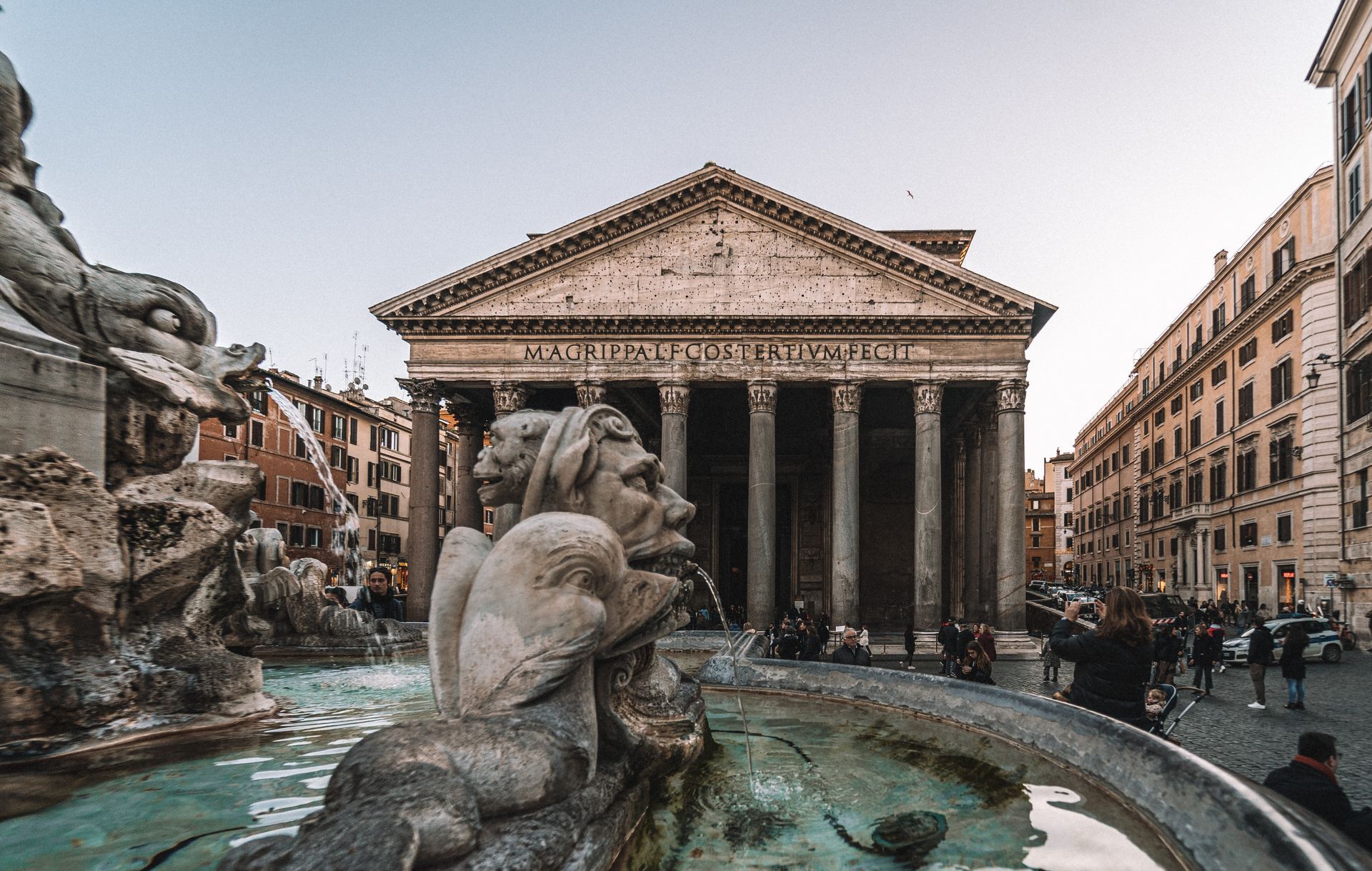Pantheon
The Pantheon Rome is a true wonder of ancient architecture, an enduring symbol of the power and creativity of the Roman Empire. Despite being one of the most imitated buildings in history, the Pantheon is often overlooked on popular shortlists of the world’s architectural icons. However, it is truly a masterpiece of engineering and design, showcasing the genius of ancient Rome.
Despite its enduring popularity, there are still many mysteries surrounding the Pantheon's history and construction. Recent discoveries and new interpretations have challenged some of the long-held beliefs about its origin, purpose, and meaning. While many sources confidently attribute its creation to Emperor Hadrian and describe it as a temple to all the gods, some scholars now argue that these details may be inaccurate.
Regardless of any uncertainties, the Pantheon Rome remains an essential destination for visitors to the city. Standing under its impressive dome and surrounded by its rich history and enigmatic aura, it's easy to see why the Pantheon continues to captivate and inspire us today. It is a testament to the incredible architectural prowess of ancient Rome and a reminder of the enduring legacy of one of history's greatest empires.
Save Time
Earn More
Grow Faster
Friendly Support
The Enigma of the Pantheon's Inscription: Whose Pantheon?
The Pantheon Rome is an architectural marvel that continues to captivate and intrigue scholars and visitors. One of the reasons for its enduring allure is the inscriptions that adorn the building. The inscription on the frieze, which identifies the Roman general and consul Marcus Agrippa as the patron, was long taken at face value.
However, recent research has shown that the present Pantheon is a rebuilding of an earlier structure commissioned by Emperor Hadrian between about 118 and 128. This raises the question of why Agrippa's name is so prominently displayed.
Archaeologists and art historians believe that the inclusion of Agrippa's name was a deliberate attempt to connect the new building with the earlier structure, thereby linking it to the illustrious history of the original Pantheon.
Despite this deception, the Pantheon remains a testament to the ingenuity and skill of ancient Roman engineering and design.
The commonly accepted interpretation of the Pantheon
For a long time, it was thought that the Pantheon was built by Marcus Agrippa to celebrate the victory at the Battle of Actium. However, recent archaeological studies have shown that the original building was not a small rectangular temple, but rather a grand structure with a portico and a rotunda similar to the current building. Furthermore, a reexamination of the bricks used in the construction of the Pantheon has revealed that most of them date back to the time of Trajan, who began rebuilding the structure after
it was damaged by fire in 110 CE. The building was finished under Hadrian's reign sometime between 125 and 128. The false inscription attributing the new building to Agrippa was likely an act of pious humility by Hadrian. This new understanding of the Pantheon's origins shows that historical periodizations should be seen as subordinate to evidence.
Temple or Dynastic Sanctuary? Unravelling the Mystery of a Roman Monument
The Pantheon Rome has long been considered a temple to all the gods, but recent scholarship suggests that it may have been intended as a dynastic sanctuary, part of a ruler cult emerging around Augustus. The original dedication was possible to Julius Caesar, the ancestor of the family line of Augustus and Agrippa, and the site was associated with sacred traditions, such as the apotheosis of Romulus.
The Pantheon was aligned on the axis with Augustus’ mausoleum, suggesting the alliance of gods and rulers. In the fourth century C.E., the Pantheon became mainly linked to the authority of the emperors and their perceived divinity. The dome’s coffers were divided into 28 sections, a perfect number with religious meaning, and the oculus at the top allowed for the sunbeam to mark time and the emperor to preside over the Roman world.
How was it designed and built?
The Pantheon Rome, built in 125 C.E., is a masterful example of advanced Roman engineering and architecture. The structure is simple yet powerful, consisting of a portico with tall Corinthian columns attached to a domed rotunda. The transition between the rectilinear portico and the round rotunda is facilitated by the intermediate block, which features a shallow pediment above the portico's pediment. Inside, the geometric clarity of the circle-in-square pavement pattern and the dome's half-sphere, along with the moving disc of light, create a breathtaking spectacle. The walls of the Pantheon are made of brick-faced concrete, a Roman innovation that allowed for spaces to be carved out of the wall's thickness. The concrete dome is graded into six layers with a mixture of scoria at the top, making the structure both structurally efficient and flexible in design. The Pantheon's advanced engineering and awe-inspiring interior make it a must-see attraction for visitors to Rome.
Who designed the Pantheon?
The designer of the Pantheon Rome is unknown, but Apollodorus of Damascus, who had designed several other major projects in Rome, is a strong candidate. He had expertise in complex architecture and engineering and had worked on Trajan’s Forum, making him the most knowledgeable person in the capital city in the 110s.
There are also stylistic and design similarities between the Pantheon and his known projects, further supporting the possibility of his authorship. Dio's claim that Hadrian banished and executed Apollodorus for speaking ill of his talents has been doubted by many historians. Recent developments in our understanding of the Pantheon's genesis have removed obstacles to Apollodorus's authorship. Nevertheless, we still cannot say with certainty who designed the Pantheon. Regardless of who designed it, the Pantheon remains a remarkable example of Roman engineering and a breathtaking work of architecture that continues to awe visitors to this day.
The Pantheon Rome has undergone numerous changes and suffered significant losses over the centuries, with materials being taken for new buildings and even for weapons. However, the building still stands as an impressive example of Roman engineering, with its brick-faced concrete walls and famous dome. Despite the removal and replacement of many original elements, such as the bronze embellishments and red porphyry columns, the Pantheon remains a testament to ancient Roman architecture and design.






